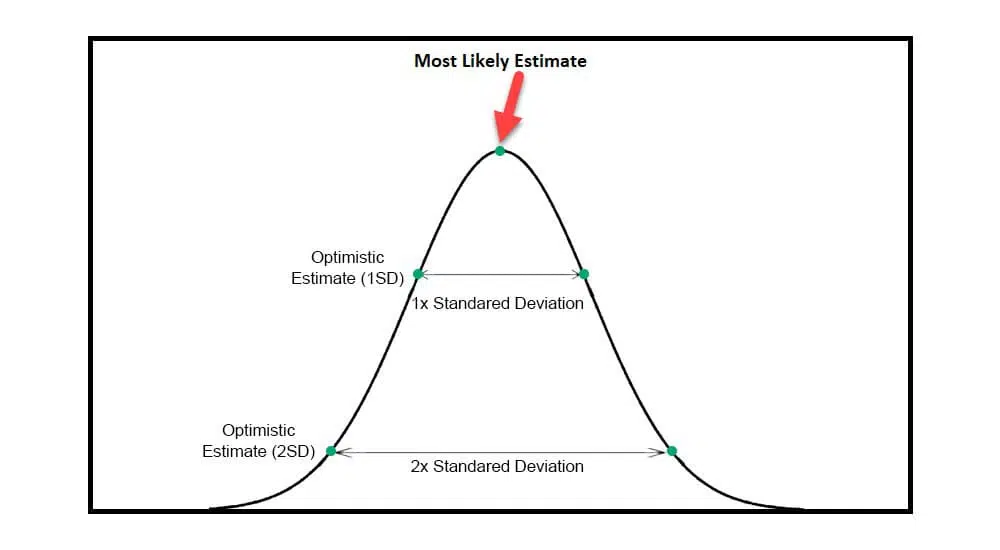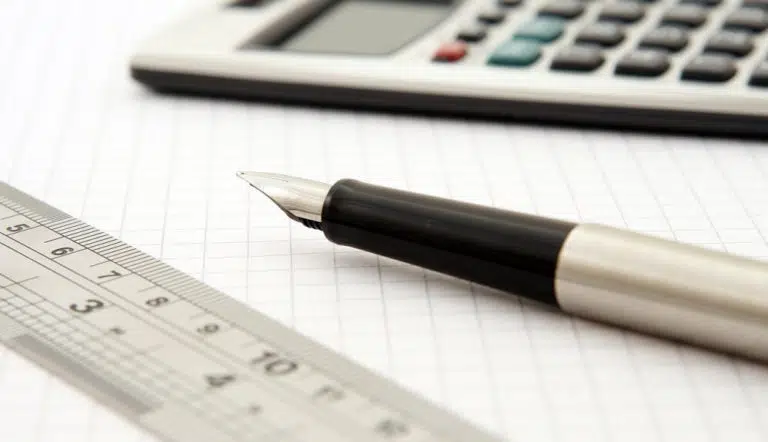Parametric estimation is a quantitative technique. You can use this to estimate project cost, project schedule, or resource requirements.
Parametric estimation is a quantitative technique used to estimate project cost, schedule, or resource requirements.
The parametric estimating technique provides a reliable prediction; however, you will need data from a recent and similar past project. You can get this info from your organizational process assets and use the parametric estimation to calculate the cost.
For example, let’s say the customer wants to construct a three-story villa and asks you to provide an estimate of the associated costs.
During the past few years, your company has finished several projects that were very similar to one another. Therefore, you should be able to estimate the costs per square foot by looking at in-house data on the prices and times needed for the completion of previous projects.
Let’s dig into this cost estimation technique.
Parametric Estimation
Definition: Parametric estimation is a quantitative estimation technique that provides mathematical equations to find estimations. Estimation based on metrics uses the historical data from completed projects, but it also considers differences in scale by determining the unit/cost durations of completed projects and comparing them to the current project.
These estimates are reliable only if a statistical relationship exists between the variables. However, these need to be estimated on a scale for all user stories or elements, which takes time.
The costs of an activity can be calculated by multiplying the amount of work to be done by the cost of performing the same amount of work in the past.
Parametric Estimation Methods
According to the PMI, the parametric estimation can be of two types:
- Deterministic
- Probabilistic
Deterministic Estimates
Here, you get a single cost and duration estimate. Based on the experience, you can adjust the estimate to include inflation and contingency reserve.
Probabilistic Estimates
Here, you get three estimates, as shown in the probability density curve in the below chart.

(A sample chart showing the probability density function of a parametric estimation.)
This method provides more practical results. The three estimates are as follows:
- Most Likely Estimate: This is the most like estimate of the duration or costs an activity will take to complete.
- Pessimistic Estimate: This is the worst-case scenario for an activity to complete
- Optimistic Estimate: This is the best-case scenario for an activity to complete.
Parametric Estimation Examples
For illustration purposes, a ditch five feet in length and five feet deep takes one laborer five hours to dig. If you make use of the same resource, digging a ditch that is ten feet long and the same depth will take you ten hours.
Now you can use the above information on your project like this:
If the labor rate for this resource is 30 USD per hour, the labor cost for a 10-foot ditch is 300.00 USD (30 USD * 10 hours).
Things like environmental or technical complexity or project risk may also need to be factored into the overall estimate.
Consider the villa construction example.
During the initial evaluation, the construction company will use the parametric estimation technique to calculate the cost based on square feet. For this exact type of building, the cost was 200 USD per SQ FT in the past (plus or minus 10%).
The current building will occupy 3,000 SQ FT (plus or minus 0%).
So, the estimated construction cost will be 200 USD * 3,000 = 60,000 USD (plus or minus 5% which is average of 10% and 0%).
Parametric estimates require a careful review when the number of units is too small or large.
Consider this from the above example:
- If SQ FT cost is 2 USD, then the estimated construction cost will be:
- 2 USD * 3,000 = 6000 USD.
- If SQ FT cost is 2,000 USD, then the estimated construction cost will be:
- 2,000 USD * 3,000 = 6,000,000 USD.
Because even a slight miscalculation in the parameter value could result in a significant deviation from the true value of the final estimate, extreme caution is required.
Parametric Estimation Features
- Rigorous data is required for analogous estimation.
- Mathematical equations based on expertise, research, and industry-specific historical data, e.g., cost per square meter in construction projects.
- Statistical relationships between historical data and other variables (e.g., square meters in construction) are used to calculate the estimate.
- Estimations through parametric estimation techniques are better documented.
How to Improve Parametric Estimation
For better estimation, ensure the followings:
- Historical Data: When doing parametric estimation, historical data is an extremely important factor. If the historical data are either inaccurate or out of date, the estimation will not produce the result that is desired. To get a better result, you should get the historical data, add the inflation factor, and make adjustments according to the current market conditions.
- Parameter: Identify the correct parameter for your estimation. For example, the cost of painting per square foot, labor rate, etc.
- Risk & Inflation: Every project is unique; a risk in a previous project cannot be the risk for your project. Identify key risks for your project and factor them into the cost. Consider the inflation if the historical data is older than two years.
Advantages of the Parametric Estimation Technique
- More accurate and reliable than analogous estimates and simple to perform.
- Very useful accurate data is available.
- Supported by senior management because of its accuracy.
- Estimates can be used for one project and replicated for other projects.
- Estimators trust this method and can calculate the capacity of labor or equipment according to the organizational environment.
Disadvantages of the Parametric Estimation Technique
- It requires time, effort, and cost.
- There must be similarities among projects and tasks to benchmark and produce estimates.
- It is difficult to account for environmental, political, and cultural differences.
- Estimating every cost or project event based on parametric benchmarks is difficult.
Parametric Estimation Vs Analogous Estimation
Although different mechanisms are used, both approaches to estimation use historical data.
To solve the parametric equation, the project manager will first break the overall project down into its component parts, then look up the unit cost from the project that came before it, and finally use this information to estimate the cost of the current project. This is a time-consuming mathematical process that ultimately yields results that are accurate enough.
In the analogous estimation, the project manager will find a similar project, and based on an educated guess; he will find the project’s cost on hand. The estimates obtained from this method are rough order of magnitude with an accuracy range -of 25% to 75%.
When you need a quick estimation, you will use the analogous method, and accuracy is not the prime concern.
Conclusion
Estimation using metrics is a reliable method that can provide cost or schedule estimates by using data from previously completed projects. The environment and the data quality play a role in determining how accurate it is.
Please note that if you are preparing for the PMP certification exam, this is an important topic. You may see a few questions in the exam from this parametric estimation technique.
How is parametric estimation helpful in cost or schedule estimation on your project? Please share with us through the comments section.

I am Mohammad Fahad Usmani, B.E. PMP, PMI-RMP. I have been blogging on project management topics since 2011. To date, thousands of professionals have passed the PMP exam using my resources.







